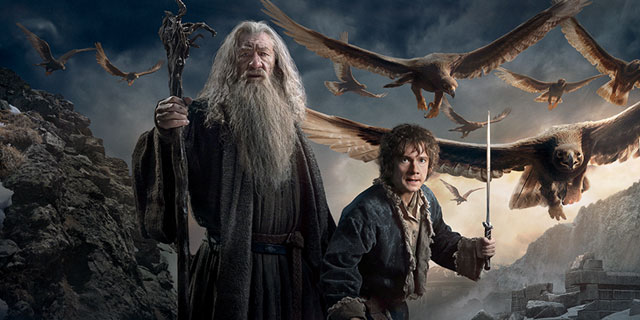Peter Jackson is okay with Hobbit being industry guinea pig
![Peter Jackson is okay with Hobbit being industry guinea pig - The Avengers It’s 2009 all over again. On the eve of the release of James Cameron‘s titanic (pun intended) Avatar, the industry was abuzz with possibilities. Could 3D become a legitimate financial vehicle again? Could Cameron finally overcome the uncanny valley for performance capture in order to deliver a brand new, photo-realistic world? Three years, $2.7 billion […]](http://hobbit.tribute.ca/wp-content/uploads/2012/07/thehobbit16-580x4351-300x225.jpg)
It’s 2009 all over again. On the eve of the release of James Cameron‘s titanic (pun intended) Avatar, the industry was abuzz with possibilities. Could 3D become a legitimate financial vehicle again? Could Cameron finally overcome the uncanny valley for performance capture in order to deliver a brand new, photo-realistic world? Three years, $2.7 billion dollars and a veritable 3D renaissance later, Hollywood is on the cusp of another (potential) revolution. But it’s not the mighty Cameron whose work is shifting the landscape of the industry this time around; nowadays, everybody has their sights set directly on Peter Jackson and his two-part adaptation of The Hobbit. “The entire industry is in some respect waiting to see what happens with The Hobbit,” said Jackson at his Comic-Con panel earlier this month. “I’m very happy to be the guinea pig.”
The Hobbit – whose first chapter, The Hobbit: An Unexpected Journey, opens later this year – was filmed in 3D, an increasingly common practice these days. But what truly sets it apart is Jackson’s insistence on shooting – and projecting – the film at 48fps – twice the normal frame rate. “[48fps] gives you an illusion of life that’s so much more vivid than 24 frames does,” Jackson insists. “You suddenly have no strobing, no motion blur, no flicker…At 24 frames a second, there’s always a sense that they slightly inhabit different worlds, but that’s one of the great moves forward. [At 48 fps] your brain processes it in a completely different way and you cannot help but believe that these two beings exist in the same space and time.” And with analog projectors now being almost universally replaced with digital ones, the number of screens that are physically capable of projecting the new frame rate is exponentially increasing.
When The Hobbit: An Unexpected Journey opens December 14th, audiences will receive an unprecedented number of viewing options: 2D (24fps), 2D (48fps), 3D (24fps), 3D (48fps) and IMAX 3D (48fps), with the possibility of even more options under the IMAX moniker. And by the time the second part of the film – The Hobbit: There and Back Again – opens the following year, who knows? Jackson, for one, is adamant that this is a necessary evolution. “While audiences are dwindling,” he says, “while kids don’t come to the movies anymore because they’re happy to watch films on their iPads, do we all sit back and celebrate the technology of 1927 and say, ‘Wow, let’s not do anything with it because that’s the look of cinema?’ Or do we try to get all these audiences to come back to the movies by saying, ‘You know what, this is really cool?’ It’s going to be like you’re really there.” ~Devin Garabedian


